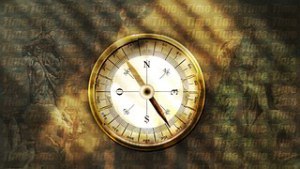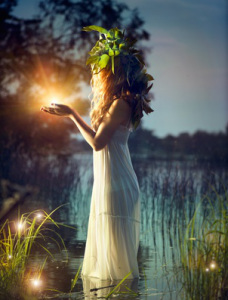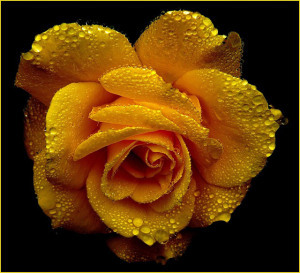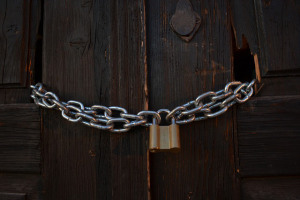Cristen Rodgers's Blog, page 22
August 17, 2015
Maintaining a Gentle Force
 For every up there is a down, for every light a darkness. This is true not only for the observable world around us but also for the mental, emotional, and spiritual world within us. Because of this, every mystical lesson will always lead us back to the magic word balance. The secret to everything is balance.
For every up there is a down, for every light a darkness. This is true not only for the observable world around us but also for the mental, emotional, and spiritual world within us. Because of this, every mystical lesson will always lead us back to the magic word balance. The secret to everything is balance.
Being balanced within ourselves means recognizing both our meek and our powerful natures. When we are at a state of inner equilibrium, we recognize that we are only as important as any other expression of the universe. We are at once on the same level as river stones and mountain ranges, a speck of dust and the brightest stars.
It is true that we are all imperfect, damaged, and at times weak. But it is also true that beneath these things we are beautiful, toughened by our scars and powerful beyond measure. When we accept the first, we allow the second. But if we deny or hide one, balance is lost and we end up being propelled by everyone’s power but our own.
When we forget to acknowledge the underlying strength, beauty, and power within us, we become victims to an uncontrollable reality. We come to believe that there are unyielding external boundaries that we must operate within and that the world in general works according to cold and unloving laws.
When we forget to acknowledge the weaknesses, the scars, and the imperfection of our human souls, we instinctively bury them. The energy that we must invest in this covering up steals away our power as surely as denying it would.
The key is in remaining honest with ourselves about who we really are. Honesty demands a sense of balance between our acceptance of our power and our flaws. When we are truthful with ourselves then we know that buried deep within there is a never-ending source of strength, love, and compassion. But we also know that layered atop that beauty is a scratched, battered, and broken shell. And as we look with naked eyes, we come to see that the damage only lends to greater strength. And from this recognition of our own perfect imperfection, we develop the ability to also see it in others and, with that sight, offer ourselves up as a reflection so that they may see their own beauty as well.


August 10, 2015
The Mapping of a Life
 One moment at a time our lives unfold. One little moment is all that life really is, one moment and then another moment, and countless more. Of course, we don’t live as if life is a series of fleeting moments; most of us don’t even live as if it is a series of short stories. Most people think of life as one, continuous story complete with chapters and parts. And for every long story there is a schema. Even despite the many unexpected twists and turns, we think of things as moving along a satisfyingly predictable plot.
One moment at a time our lives unfold. One little moment is all that life really is, one moment and then another moment, and countless more. Of course, we don’t live as if life is a series of fleeting moments; most of us don’t even live as if it is a series of short stories. Most people think of life as one, continuous story complete with chapters and parts. And for every long story there is a schema. Even despite the many unexpected twists and turns, we think of things as moving along a satisfyingly predictable plot.
Perhaps it is comforting to have this subconscious line drawn out behind and before us, making sense of what may otherwise seem random and chaotic. And it may give us some peace of mind when things seem uncontrollable, to secretly fall back on the idea that we are being pulled along on the strings of fate. But, as is so often the case, what brings us comfort in these matters can also steal our power.
Even if you aren’t particularly inclined to embrace or even entertain the idea of fate, you likely still have a form of a storyline that allows you to make sense of the way that your life has unfolded thus far. For most people, although unconsciously, these storylines also help to make sense of where life is heading. For some, the general story is one of salvation; for others the storyline follows a simple upward slant as they face challenges, overcome them, and grow stronger and more successful. There are countless different possible designs but most of them follow a general slant, moving steadily up or down or, for some, reaching a plateau.
There is certainly nothing wrong with using mental constructs such as these to orient ourselves in a moment by moment reality. We are always better off remembering; however, what is real and what is a mental fabrication. A map is a representation of the earth that is meant to help us navigate, but when an existing road isn’t marked on the map, we must remember to look up from it. Our life schemas are like that map. While they can be a comforting little thing to keep in our pockets to orient us, they aren’t the real thing. The real thing is unpredictable and, because of this unpredictability, wildly beautiful.
We must appreciate the untamed nature of the future and the infinite potential of the present. We must appreciate it because it is in our natures to, when we are unable or unwilling to appreciate it, attempt to cage and control wildness. Let’s not replace the untamed potential of the future with a manufactured plotline. The future is exciting and seductive precisely because it is uncertain.
Let’s not look at the moment by moment as notches on a timeline but as the infinitely unfolding present that it is. Remember what was, not in terms of where you are or where you’re going. Love it for the sake of the experience alone. Look to the future, not in terms of where you will be, but in recognition of its infinitely chaotic beauty. And be aware in the present moment, not for what it proves from the past nor where it will take you. Be aware of the beauty that it holds because it is unrelated to either.
Simply put, appreciate the vulnerability of now and don’t get stuck interpreting it according to a schema that you accepted long ago. Drop the timeline and appreciate the vulnerability of the unpredictable now and you will certainly be rewarded with greater happiness, freedom, and perhaps even more possibilities will open up before you as well.


August 8, 2015
Divine Beauty
 For those who believe in the inherent beauty of life, it is apparent in everything. This is because beauty is an experience more than a description. To experience beauty is to recognize life, consciousness, energy, balance, and chaos. It is to feel as much as see the soul, the spark, of a thing or a person. And to experience beauty is to connect with the source of your admiration; meaning it is to simultaneously experience yourself, another, and God all in one. It is because of this necessary willingness to look beyond the surface that it’s possible for one to see beauty where another sees nothing
For those who believe in the inherent beauty of life, it is apparent in everything. This is because beauty is an experience more than a description. To experience beauty is to recognize life, consciousness, energy, balance, and chaos. It is to feel as much as see the soul, the spark, of a thing or a person. And to experience beauty is to connect with the source of your admiration; meaning it is to simultaneously experience yourself, another, and God all in one. It is because of this necessary willingness to look beyond the surface that it’s possible for one to see beauty where another sees nothing


August 6, 2015
Authentic Giving
 There is no greater pleasure than to give from your real, authentic self . When you give of your true unfiltered nature, when you let your soul leak out into your work, you pierce the barriers that separate us. And through this piercing, energy begins to flow freely and unchanged, beautiful in its imperfect and vulnerable state. This place of real energy exchange is where love and passion are born; it is the place of infinite possibilities and uncompromising beauty. True giving is sharing your own pure energy; it is to bless others by sharing your passion. In this way, it is a selfish act, pleasing to the self both in its freedom and its joy.
There is no greater pleasure than to give from your real, authentic self . When you give of your true unfiltered nature, when you let your soul leak out into your work, you pierce the barriers that separate us. And through this piercing, energy begins to flow freely and unchanged, beautiful in its imperfect and vulnerable state. This place of real energy exchange is where love and passion are born; it is the place of infinite possibilities and uncompromising beauty. True giving is sharing your own pure energy; it is to bless others by sharing your passion. In this way, it is a selfish act, pleasing to the self both in its freedom and its joy.


August 3, 2015
The Meaning of a Rose
 Everything has meaning; and nothing has meaning. At least, nothing has inherent meaning. But when things pass through our minds and are colored by our memories, associations, and generalizations they become significant; suddenly they mean something. A rose, for example, doesn’t mean anything until it is processed through a mind that has associated it with love and romance. Then, suddenly, the rose is significant and full of implications.
Everything has meaning; and nothing has meaning. At least, nothing has inherent meaning. But when things pass through our minds and are colored by our memories, associations, and generalizations they become significant; suddenly they mean something. A rose, for example, doesn’t mean anything until it is processed through a mind that has associated it with love and romance. Then, suddenly, the rose is significant and full of implications.
Part of being spiritually aware is recognizing that the core of every person, object, or event is pure potentiality. And this implies that objective meaning cannot exist. A tree, for example, can’t be interpreted in the same way during autumn as it is in the spring. A tree is potentially green, brown, bare, and full of fall colors. If we choose to define it by one expression of that potential, we cannot be upset when someone else defines it by another. Nor can we expect that they accept our definition.
When we are operating from a place of spiritual awareness, we don’t need to strictly define the meaning of the symbols we encounter. We understand that no definition holds permanently true, because all things are in a state of flux. Knowing this allows us the freedom to investigate the many ways that something can be understood, because we aren’t limited by a belief about how it should be understood. And this freedom opens up new worlds to explore and helps us develop greater empathy.
Imagine if you could always see a rose in a new way; the experience of each rose entirely and exquisitely fresh and novel. When we accept the potentiality of the things in the world around us and let go of the need to strictly define them, we get closer to this being a reality. We can experience things as if they are new time and time again. In addition to this, we will find that we better relate to others and understand the way that they perceive things, leading to more cooperation and growth.
Perhaps if we could each commit to reminding ourselves everyday that all things exist as potential, we could begin shaping a more exciting and friendlier world. We could all wake each day knowing that we are bound to experience something completely new and will undoubtedly get to take a new perspective of something. Let’s share our interpretations of that rose freely and without judgment; maybe we will bring a little more pleasure and a little more empathy to the world in the process.
More at cristenrodgers.com


July 30, 2015
Beyond the Veil
 When we truly connect through meditation or prayer, the veils that divide one thing from another are ripped. As we peer beyond that gauzy illusion, we discover a world of energy. Here beyond the veil, unique things are simply ripples and waves in an infinite field of energy. Without form, there is no sense of separateness. And because we can see this, there is no possibility of loneliness, competition, or fear. There is only the universal energy of God and infinite different expressions of it. Beyond the veil we are all one and as one we are all Divine.
When we truly connect through meditation or prayer, the veils that divide one thing from another are ripped. As we peer beyond that gauzy illusion, we discover a world of energy. Here beyond the veil, unique things are simply ripples and waves in an infinite field of energy. Without form, there is no sense of separateness. And because we can see this, there is no possibility of loneliness, competition, or fear. There is only the universal energy of God and infinite different expressions of it. Beyond the veil we are all one and as one we are all Divine.


July 26, 2015
The Lesson in the Dirt
 While I was out in the back yard doing my stretches this morning, I found myself in a familiar position with my face just inches above the ground. I always enjoy this opportunity to take in the details of the earth that is normally under my feet, but this morning something stirred inside of me as I looked at it. I felt compelled to really pay attention to what I was looking at and I sensed the familiar sensation of an incoming message.
While I was out in the back yard doing my stretches this morning, I found myself in a familiar position with my face just inches above the ground. I always enjoy this opportunity to take in the details of the earth that is normally under my feet, but this morning something stirred inside of me as I looked at it. I felt compelled to really pay attention to what I was looking at and I sensed the familiar sensation of an incoming message.
As I stretched out there with my nose just inches above the dirt, I noticed how what we think of as dirt is really just a collection of countless materials. It became clear when I was that close to it that there were little pieces of dead leaves, broken twigs, tiny stones, and all kinds of other things that were lying there partially broken down. These were the things that, with time, would also become part of that dirt. Their energy would be released into the earth and would help to make the ground fertile for the next generation of life to grow from.
For a moment I was completely transfixed, mesmerized by what I was seeing in the ground beneath me. By doing nothing but remaining still, the earth births a whole symphony of activity. From simplicity, complex systems unfold. The earth doesn’t reach out to pull more nutrient rich leaves and twigs to it; nor does it push away the things it doesn’t need. It remains unmoved regardless of what materials fall upon it. And in remaining unmoved, those materials are able to give the best of what they are to the earth and the earth then repays that by way of its richness.
So it must be for us in our day to day lives. When we are able to remain still and quiet the ego, we can accept things as they are. If we are able to do this, to stop trying to control what’s around us, we give those things permission to express their truest nature. In so doing, we enrich the whole environment, ourselves included. When we allow others to be their true and unchanged self, they respond by granting us the same permission. As this freedom to express continues to move outward, the whole environment becomes ripe with passion. When we let go and accept what is, we can stop wasting so much mental energy on labeling, anticipating, and planning. We encourage and are encouraged to break down those processes that we don’t need and release the pure energy that resides underneath.
In this way, perhaps, we can all benefit by remembering to just let things be. Let’s give each other permission to be our true selves, to release our own creative passions in the way that we each are meant to. Let’s try to be a little more like the earth, hold nothing and reject nothing. If we do this, maybe we can collectively prepare our world for the next great generation of passionate creations even as we are simply expressing our own.
For More visit cristenrodgers.com


July 13, 2015
The Monster in the Closet
 We all learn early in life that every story has a hero and a villain. As children we become lost in our storybooks, anxiously reading on to see if the innocent and lovable characters will escape the goblins, pirates, and sinister witches who are always on the prowl. From these stories we derive the message that there are good guys and there are bad guys. Even as adults, we entertain ourselves with stories that clearly define the protagonist and the antagonist.
We all learn early in life that every story has a hero and a villain. As children we become lost in our storybooks, anxiously reading on to see if the innocent and lovable characters will escape the goblins, pirates, and sinister witches who are always on the prowl. From these stories we derive the message that there are good guys and there are bad guys. Even as adults, we entertain ourselves with stories that clearly define the protagonist and the antagonist.
We want and perhaps even need to see ourselves in the characters that bring goodness into the story. And we secretly fear any sign that we might have the potential to be the ones bringing darkness. So, we set ourselves to the task of living up to the standards laid out by the young explorers or the magical animals of our storybooks and to never become anything like the menacing evil that hunts them. We work hard to be sure that we are the hero and could never be anything like the villain.
Perhaps this desire to be the good guy is itself a sign of the inherent goodness in all of us; but it can quickly lead us to behaviors that cast shadows over that innate lightness. For everyone who is at all self-aware, the moment inevitably comes where we discover that parts of ourselves are not quite what could justifiably be called good; we find that there is darkness even in the most beautiful hearts.
For many of us, this discovery leads us to deny or hide certain parts of who we are. We try to be rid of the less-than-heroic aspects of self and live in the delusion that we can and should be all-good. When we attempt to deny any part of the self, we end up ripping our own souls in two. The pain this causes is real and the damage can be great.
Despite the almost seductive nature of the belief that there is ‘good’ and there is ‘bad’, we must remember that everything actually exists as pure potential. This includes ourselves; we are neither good nor bad. We are bundles of potential; our natural goodness comes out in how we express that potential, but even those expressions cannot be so clearly defined as strictly one or the other.
What can be pretty clearly defined is what happens to the aspect of self that we try to hide: it only grows stronger because, as a part of the self, it never truly goes away. It just keeps trying to find new ways of expressing itself. In addition to this, when we choose to label that part of self as undesirable or somehow unfavorable, we make it so. Every part of who we are is pure potential, but when we choose to label it, that potential will naturally begin to express itself according to that label. Simply put, whatever we choose to label and hide will grow into its name and become impossible to control.
A good metaphor for this tendency is the monster in the closet. When a child believes that there is a monster in the closet, what is the first thing that we do as parents? We open the closet to show them that there is nothing there. But, if no one ever opens that closet, the monster becomes a greater and more menacing certainty to the child. The fear of this monster continues to grow until, eventually; the fear itself becomes the monster. Hence, the monster has grown into something all too real. The same is true for the different parts of who we are. When we are brave enough to open the closet door, we will find that we choose moment by moment who and what we are and, because of that, there is no part of the self that is either good or bad. But, if we are too afraid to peer inside and choose instead to hide the monster, we will be eaten alive by our own creation.
Be brave, my friends. Don’t shy away from who you are; be courageous enough to look. You will find that, instead of a monster, there is only energy. And that energy will become whatever you choose to call it. So don’t treat like a caged animal; treat it like creative potential. The more that you accept all of who you are, the more that you will find ways of putting all of who you are into the most beautiful and loving creative expressions.
Read More at cristenrodgers.com


June 22, 2015
Social Sorting
There is light and darkness. There is love and hate or happy and sad. There is the extraordinary and the insignificant. But most things fall somewhere in between each of these extremes. Real things aren’t polarized; they are complex and subtly intertwined. We create these extreme terms for the sake of simple cognition, but when these categories actually begin interfering with correct cognition, we must take a step back and remember that life really is all about shades of grey.
If you take a look around you may notice that there is a dizzying array of categories that people are placed in. We label and are labeled, using polarized terms to reference ourselves and one another in religion, politics, gender, class, and many more areas of critique. It seems as if there is no personality, belief, attitude, behavior, or even preference that is sacred enough or even unique enough to be spared categorization and the resulting generalizations.
The biggest reason that these categories have become overwhelmingly predominant is the benefits they give to corporations and institutions. People are grouped and generalized so that they can be more clearly targeted, referenced, avoided, or judged. The grander the category, the easier it is to instigate social movements or to sway popular opinions. The more specific the category, the easier it is to make a sale. For these two reasons, categorizing people from the greatest possible commonality down to the seemingly most unique characteristic has become the norm.
If this tendency to categorize and group people were to remain in the minds of marketers and politicians, the pitfalls would be far fewer. But with the internet and the resulting tailored media consumption, the public has begun adopting, creating, and sustaining these categorizations on their own.
It is almost universally true that absolutes are nonexistent except as mental constructs. But when it becomes commonplace to view people in reference to what category they fit into, such absolutes begin to appear real. The illusory constructs of thought begin to seem like real defining characteristics. Thinking that polarities actually exist leads to the overall perception of separation and competition between one another. This can easily pave the way for the rationalization of things like envy, greed, and war.
We owe it to ourselves and to one another to break free from these categorizations, to remember that nothing really fits comfortably in a category, no matter how big or small. When we break out of them ourselves, we allow our spirit’s true creative freedom to shine. We also give ourselves new eyes to see the intricacies that make each person unique, intricacies that are often glossed over when we think of them in reference to their grouping.
Perhaps one of the best ways to combat the increasingly common categorization and polarization of people is to practice meditating upon compassion. Compassion, by its very nature, breaks down the boxes that people are placed within. With compassion we see the details that make people individual, the lesser known intentions rather than just the observable acts. Practicing compassion helps us to recognize the spirit within, the inimitable consciousness of each person. When we see the spirit within rather than just the shell of a human, we know that there is no way to group or even to compare. Compassion also helps us to avoid categorizing ourselves; it reminds us that we are really just potential and that we can choose to change how we are expressing that potential whenever we please.
I intend to set aside time every day specifically for compassion and I invite you to join me. Let’s remember that we are not the names used to describe us or the categories used to define us. Even as the population increases and individuality becomes itself a cliché, let’s remember that every single person is a unique expression of energy and we owe it to ourselves and to one another to appreciate that expression in its fullness.
For More Visit cristenrodgers.com


June 16, 2015
Words of War
I have noticed recently how very often words of war are used in mainstream spiritual conversations. It seems like this talk is everywhere. People speak about defeating evil, of spiritual warfare, and battling the devil, among many more similar turns of phrase that all imply that there are spiritual polarities battling each other and humanity’s role is to be the soldier. There are even entire religious assemblies and spiritual movements that are centered on the idea of creating armies to fight iniquity and presumably to re-establish righteousness.
It’s easy to understand why this metaphor just won’t go away. This particular figure of speech sticks because it gets people moving. The idea of war, whether real or imagined, prompts a flood of adrenaline and the instinct for self-preservation. It motivates people and does so in a big way. Add to that the vast number of people that can be rallied under one purpose and it is the perfect prescription for mass incentive for action.
While no doubt the intent of those who use this metaphor is to bring greater spiritual awareness and passion to the masses, this particular approach may actually be doing more harm than good. Believing that there is some sort of battle between two clearly defined sides leads to grand generalizations, as everything needs to be assessed in terms of good and bad. And grand generalizations of this sort are often a primary cause of human suffering. Love and compassion require the disintegration, not the creation, of generalizations.
Thinking in terms of warfare also pulls attention away from the place where the real work is being done, within the self. If we wish to transform the world, we must transform ourselves. The collective springs from the individual. If we wish to see less evil in the world, then our responsibility is to nurture more good within ourselves. In no context can war serve that particular purpose. Fighting evil simply cannot create more good; however, creating more good can and does naturally dissipate evil.
Finally, the purpose of war is destruction rather than creation. Your choice of focus is monumental in what your energy will convey to the world; what you focus on is what you will bring more of. If you choose to perceive the world in terms of war, you are focused on and thus will manifest more destruction. If you choose instead to perceive the world through compassion and self-development, you will create more growth and beauty.
Evil springs from the loss of self-awareness and separation from one another. To wage war against evil is to become it, as it unavoidably takes focus away from self-development and creates imagined boundaries between us and others. To truly be a ‘spiritual warrior’ we must practice compassion, focus on love, and master the self.
We can turn the tide of this stubborn metaphor by choosing individually to focus on what we are creating. What are we each bringing to the world to make it better? How are we conveying love and what unique blessings are we manifesting? In this way, we can help this collective perception to evolve and, through that evolution, bring the changes that we truly want to see.
For More Visit cristenrodgers.com





